On January 30, 2018, the press conference of the International Centre of the Roerichs took place at the press-center of Rosbalt Information Agency for Russian and foreign journalists. It was timed to the 25th anniversary of the death of Svetoslav Roerich (1904-1993), the younger son of a great Russian painter Nicholas Roerich, the founder of the Non-Governmental Museum named after Nicholas Roerich in Moscow. The press conference was also held to mark 9 months since the illegal seizure of the Museum by the Ministry of Culture of the Russian Federation and the State Museum of Oriental Art subordinated to the Ministry.
The Vice-President of the International Center of the Roerichs Alexander Stetsenko told that Svetoslav Roerich donated the heritage of his family to Russia for the creation of a non-governmental museum in the 90-es of the XX century. At that, Svetoslav Roerich set two mandatory conditions. First, the museum must be of a non-governmental format. Secondly, it was to be located in the Moscow Lopoukhins’ Estate.
The International Center of the Roerichs founded by Svetoslav Roerich received a dilapidated building of the ancient Lopoukhins’ Estate. The estate was restored thanks to patrons and the public without a single penny of government funds. The ICR was awarded a national award in the field of restoration and a prize of the European Union for the preservation of the cultural heritage of Europe. The ICR with the help of patrons returned more than 400 paintings and drawings of Roerich to Russia, held over 600 exhibitions, published 250 books from the Roerichs’ heritage and about the Roerichs. The Non-Governmental Museum Named after Nicholas Roerich of the ICR became the largest non-governmental museum in Russia with the world’s largest art collection and archives of the Roerich family.
The President of the Russian Federation twice awarded the Director-General of the Non-Governmental Museum Named after Nicholas Roerich Lyudmila Shaposhnikova Russian orders. Moreover, both times the Ministers of Culture presented the awards personally.
The situation changed radically when a new Minister of Culture Vladimir Medinsky took office. He took a course to destroy the non-governmental museum. In 2015, the Ministry of Culture demanded the prosecutor’s office to remove the heritage belonging to the ICR. The prosecutor’s office conducted 5 inspections, but could not make a decision on the illegality of the heritage possession. Not having a single document on the Roerichs’ heritage, the Ministry of Culture did not appeal to the court. An entirely different path was chosen to end in the most real hostile takeover.
The Ministry of Culture has developed a whole scheme to assign the estate and the property of the ICR. The developing story was told by Alexander Stetsenko, “In February 2016, the Ministry of Culture called a meeting of the board at which it was decided to create a State Roerich Museum as a branch of the State Museum of Oriental Art on the basis of funds and premises of the Non-Governmental Museum Named after Nicholas Roerich. At that time Moscow authorities transferred the estate to federal property. The Federal Agency for State Property Management immediately formalized it for operational management of the State Museum of Oriental Art. The State Museum of Oriental Art immediately began the procedure of free use agreements termination and eviction of the ICR from the Lopoukhins’ estate.”
The Arbitration Court was sued for eviction, but the claim was not supported by any evidence of the ICR’s violations of its obligations to the government to maintain the estate. Therefore, further unplanned inspections started, in the course of which, it was found out to a great surprise of the ICR’s workers, that “the maintenance of the estate appeared to be unsatisfactory”, and that “about 17 commercial organizations were registered on its territory”. It is noteworthy that just a few months before, the Moscow City Department of Cultural Heritage was conducting a routine check of the estate and found no violations. Nevertheless, in March 2017, the court decided to terminate free use agreements and evict the ICR from the Lopoukhins’ estate.
On the night of 28 – 29 April 2017, the State Museum of Oriental Art carried out a power takeover of the territory and buildings of the Lopoukhins’ estate. The Ministry of Culture illegally seized all the funds of the Non-Governmental Museum belonging to the ICR under the cover of the investigative actions conducted by the Main Investigation Department of the Ministry of Internal Affairs of the Russian Federation in the case concerning the Master Bank. Also, the seizure of the property of the organization and its workers took place, which resulted in numerous thefts.
“On April 29, 2017, the Main Investigation Department of the Ministry of Internal Affairs of the Russian Federation, under the pretext of investigative actions against the head of the Master Bank, transferred the buildings to the Museum of Oriental Art for operational management, and the property located in it for safe custody,” Alexander Stetsenko stressed. Thus, the reason for the eviction of the ICR from the building was that of the criminal case against the head of the Master Bank, who 20 years before helped to restore the estate.
At the same time, the court’s decision did not come into force, because the ICR immediately appealed against it. “The decision came into force only in August 2017, when the appellate instance passed an appropriate decision. Prior to this there was no legal decision”, there explained the attorney of the International Center of the Roerichs Dmitry Kravchenko.
The ICR’s workers were able to enter the territory of the estate only on January 15, 2018. It was the day when the enforcement proceedings concerning the court’s decision began to release the ICR’s property and remove it from the Lopoukhins’ estate. “In our absence, the doors were forced open, the boxes were ransacked. The property was just piled up in several rooms. The furniture were disassembled. Moreover, all these 9 months the workers could not take away their personal property. It was possible to return the property only after applying to the courts. But many things turned out to be simply gone, those of valuable icons in a silver setting, expensive gift books, sculptural compositions. The workers cannot return their passports, certificates of marriage and birth so far. I received my passport only after I sued the court in January 2018. When I went into my office, the box was ransacked. On what grounds?”, Alexander Stetsenko told.
These facts were confirmed by the ICR’s attorney Dmitry Kravchenko. “The expensive museum property, those of showcases, design elements, exhibits have been destroyed or broken. It becomes obvious that the property of the ICR has suffered damage. The workers of the ICR were offered compensation, that is, the State Museum of Oriental Art has recognized the loss of property”, the lawyer said.
Recently, the Ministry of Culture represented by the First Deputy Minister V. Aristarkhov has been taking all possible measures to eliminate the ICR on the flimsiest of pretexts, up to accusations of extremism and claims to the organization’s charter.
“When we saw that part of the property was actually destroyed, we insisted on all the property transferring only by acts signed by the two sides. The State Museum of Oriental Art has refused to sign the acts”, Dmitry Kravchenko said. The ICR continues to appeal against the decision of eviction from the buildings of the Lopoukhins’ estate. Also now, the ICR is trying to find out where its property has gone, and what its legal status has been.
In conclusion of his speech, Alexander Stetsenko, assessing the events around the ICR, recalled the prophetic phrase of Nicholas Roerich, “The destruction of a museum is the destruction of a country”.
Ilya Shablinsky, a member of the Council for the Development of Civil Society and Human Rights under the President of the Russian Federation, Doctor of Law, Professor, stressed that there has been no legal basis for such actions by the Ministry of Culture and other structures in relation to the ICR and its Non-Governmental Museum Named after Nicholas Roerich. The Council for the Development of Civil Society and Human Rights under the President of the Russian Federation has never faced such situations when governmental structures deprived the property of a non-governmental organization. The Council has appealed in this regard to the first deputy head of the Presidential Administration of the Russian Federation S. Kiriyenko but received no response. Ilya Shablinsky called for a legal and historical assessment of what is happening.
Natalia Cherkashina, Acting Director General of the Non-Governmental Museum Named after Nicholas Roerich, emphasized that the Museum Named after Nicholas Roerich was the largest non-governmental museum in Russia and one of the largest in Europe. She noted that its Director General Lyudmila Shaposhnikova created a composition that combined science, beauty and spirituality. For the first time the whole Roerich family was represented in the museum. Natalia Cherkashina submitted the photos with beautiful views of the Non-Governmental Museum halls. Nothing has remained of these now. The gray paint, in which the present museum was painted, has been the final touch of the triumphant vandalism. The worst thing is that all this happens in an atmosphere of silence of the public and museum workers. Natalia Cherkashina noted that the 25th anniversary of the Non-Governmental Museum Named after Nicholas Roerich, which was planned to be celebrated on February 12, 2018, will be marked by the opening of a virtual museum. Minister Medinsky will not be able to erase the Roerichs from the memory of people.
The First Deputy Director General of the Non-Governmental Museum Named after Nicholas Roerich Pavel Zhuravikhin, accompanying his speech with photographs, described how the staff of the State Museum of Oriental Art destroyed unique exhibits that were presented in the halls of the Non-Governmental Museum Named after Nicholas Roerich. It seems that all this was done deliberately, so that there was no way to restore these exhibits. When the workers of the ICR were able to get into the main building of the Lopoukhins’ estate, they saw broken show-windows, broken parts of friezes, a pile of wood remained of the unique wooden carving. In fact, many years of public work has been cynically destroyed by those who call themselves cultural figures. Pavel Zhuravikhin stressed, “These crimes are committed against the Museum of outstanding figures of world and national culture, those of the Roerichs, and their heritage. We will not remain silent, since impunity is the bedrock of the corruption of both society and our State and its people.”
The situation of total lawlessness around the International Center of the Roerichs, has already gone well beyond Russia and caused serious concern of the world community. The press conference received letters of support from Austria, Bulgaria, Latvia, the Republic of Belarus, as well as from the European Association of Support to the ICR and its Non-Governmental Museum Named after Nicholas Roerich.
Press Service of the International Center of the Roerichs

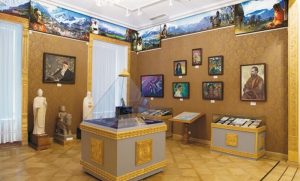
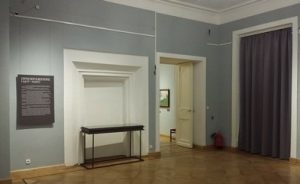
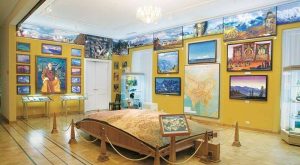
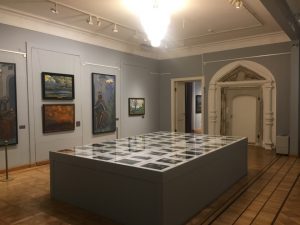
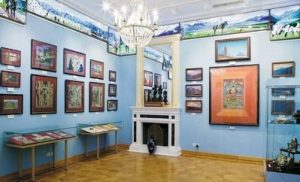
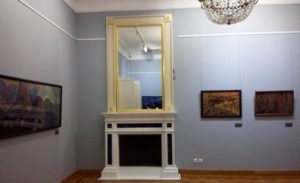
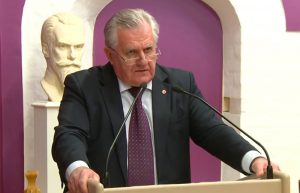

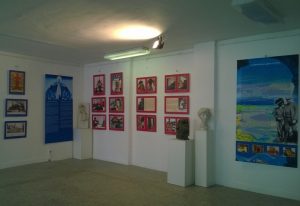
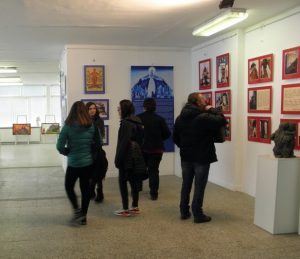
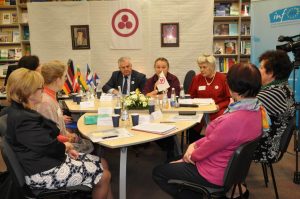 THE GRAND opening ceremony took place in the foyer, where an exhibition dedicated to the creation and signing of the Roerich Pact was launched. Evgeniya Dynko has performed “Prelude in C-dur” by Bach and “Waltz” by Georgy Sviridov. Marianna Ozolina, the Chairperson of the Latvian Branch of the ICR has greeted the participants of the meeting and addressed the words of gratitude to the Baltic International Academy. She has noted that the Banner of Peace, a symbol of the Roerich Pact, has a direct link to the venue of the round table. The building in which the round table was to be held a quarter of a century ago was one of the blocks of Riga Institute of Civil Aviation Engineers. An astronaut Talgat Musabaev was among the graduates of this institute. It was Talgat Musabaev who hoisted in outer space the Banner of Peace, handed to him by the Vice-President of the ICR Lyudmila Shaposhnikova.
THE GRAND opening ceremony took place in the foyer, where an exhibition dedicated to the creation and signing of the Roerich Pact was launched. Evgeniya Dynko has performed “Prelude in C-dur” by Bach and “Waltz” by Georgy Sviridov. Marianna Ozolina, the Chairperson of the Latvian Branch of the ICR has greeted the participants of the meeting and addressed the words of gratitude to the Baltic International Academy. She has noted that the Banner of Peace, a symbol of the Roerich Pact, has a direct link to the venue of the round table. The building in which the round table was to be held a quarter of a century ago was one of the blocks of Riga Institute of Civil Aviation Engineers. An astronaut Talgat Musabaev was among the graduates of this institute. It was Talgat Musabaev who hoisted in outer space the Banner of Peace, handed to him by the Vice-President of the ICR Lyudmila Shaposhnikova.
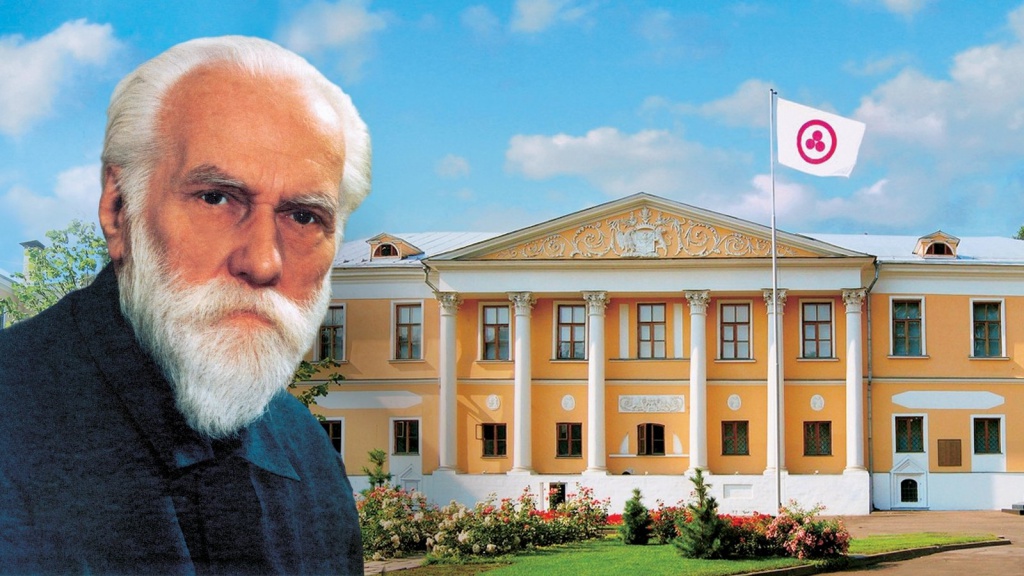
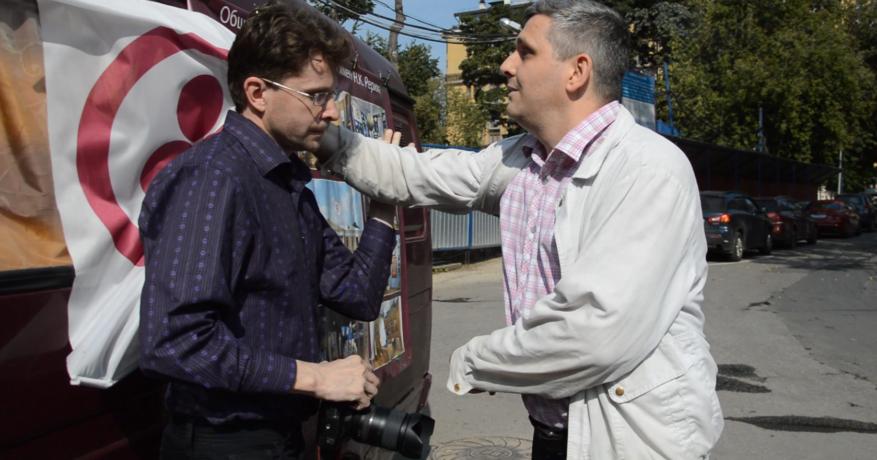
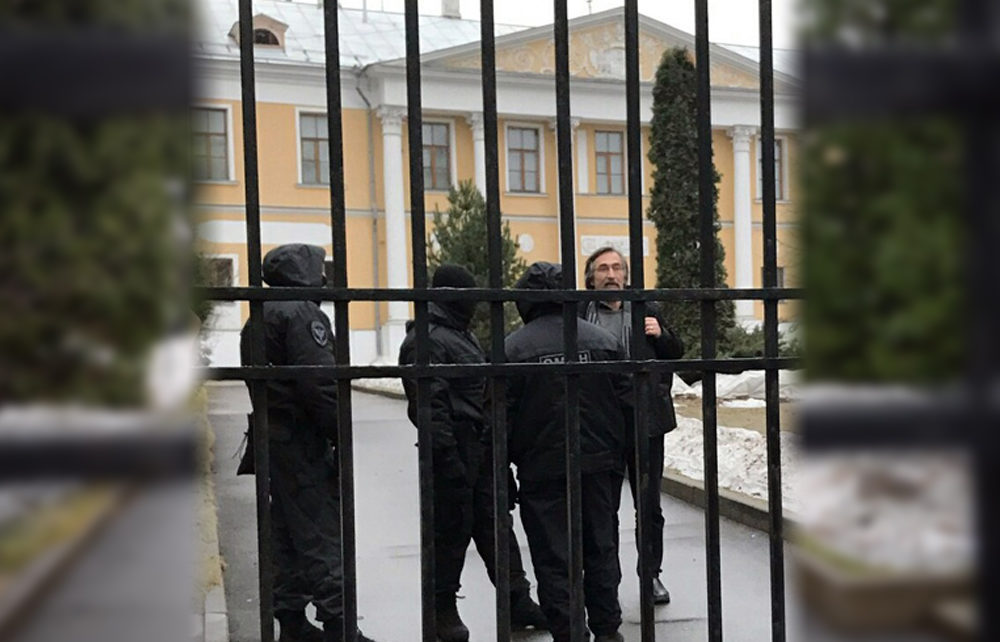
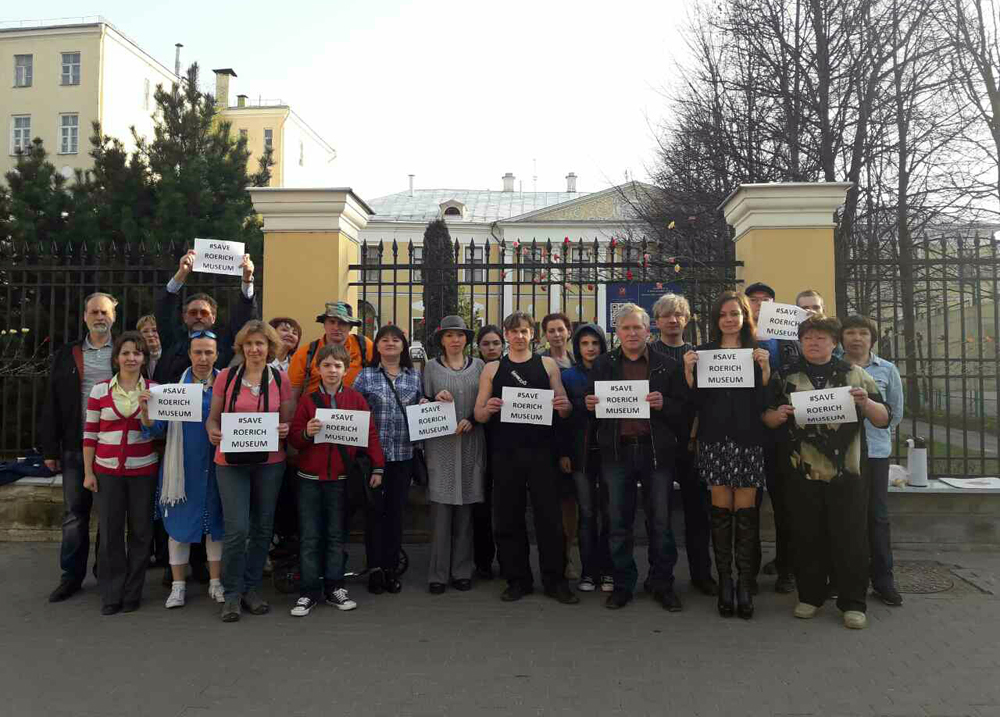
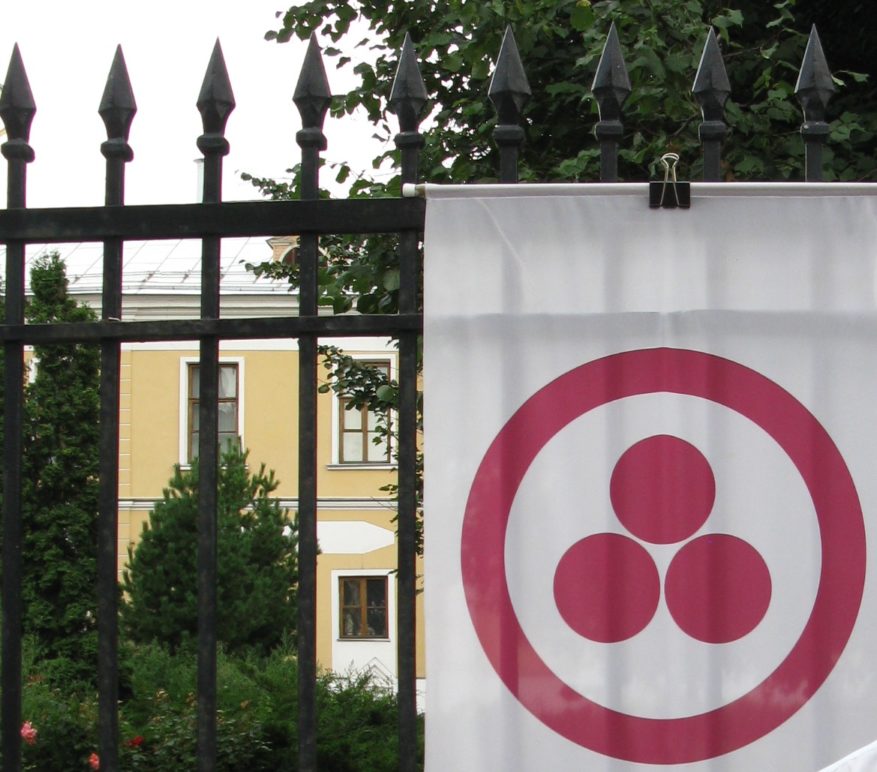
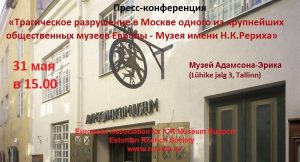 In Moscow, after 25 year of successful work, the International Centre & Museum of the Roerichs (ICR) has been seized and robbed. For many years, many non-governmental organizations and societies in the European Union, such as from Estonia, Latvia, Bulgaria, Finland, Germany, Austria, and also in countries outside the EU, such as Belarus and Latin America, have cooperated with this international non-governmental organization. In the night from April 28th to 29th, the buildings and all property of the ICR, located close to the Kremlin, had been seized by employees of the State Orient Museum with the support of forced bodies without recognition badges. The whole action happened without presentation of documents, without judicial decision, and is absolutely illegal.
In Moscow, after 25 year of successful work, the International Centre & Museum of the Roerichs (ICR) has been seized and robbed. For many years, many non-governmental organizations and societies in the European Union, such as from Estonia, Latvia, Bulgaria, Finland, Germany, Austria, and also in countries outside the EU, such as Belarus and Latin America, have cooperated with this international non-governmental organization. In the night from April 28th to 29th, the buildings and all property of the ICR, located close to the Kremlin, had been seized by employees of the State Orient Museum with the support of forced bodies without recognition badges. The whole action happened without presentation of documents, without judicial decision, and is absolutely illegal.